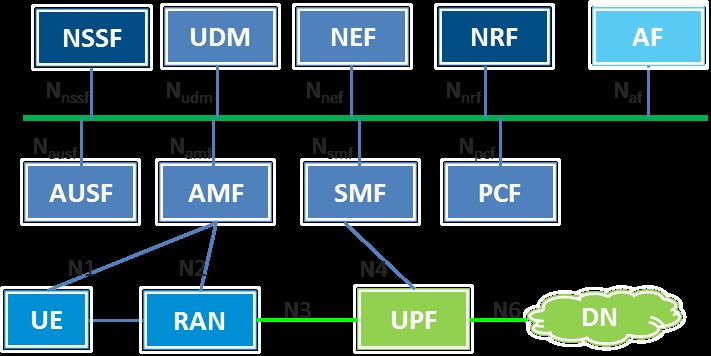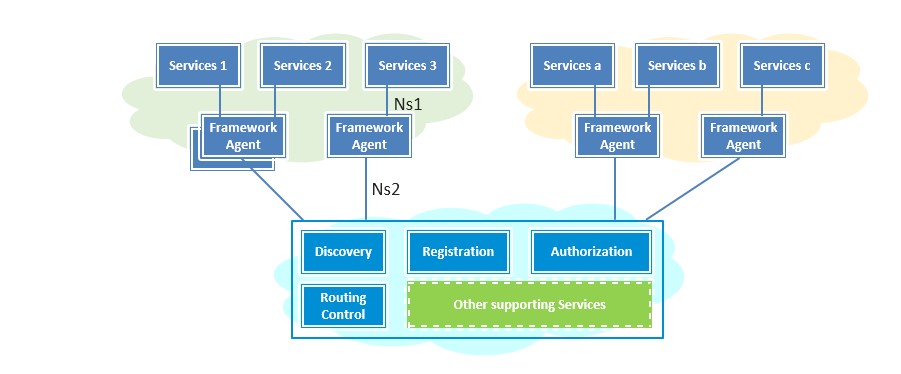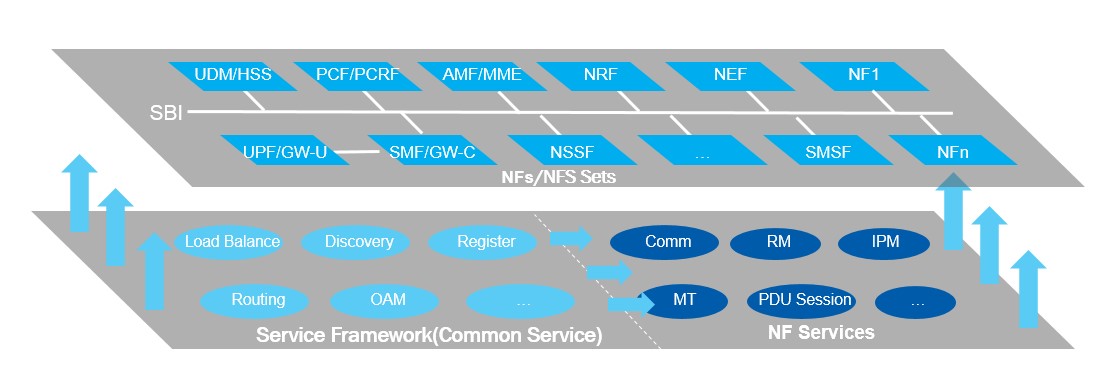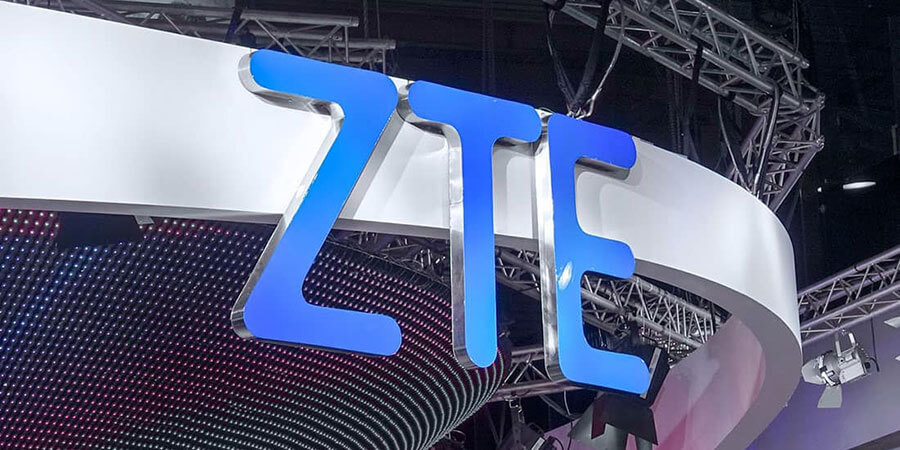In the 3GPP R15 version, the Service-based Architecture (SBA), as the network infrastructure of 5G, greatly promotes the transformation of micro-services from CT to IT. With the extensive testing and trial commercialization of operators and equipment vendors, the maturity of SBA is getting higher.
The introduction of the SBA architecture transforms the telecommunication equipment from the high coupling mode of network elements or between network elements in the past to the service-oriented mode of network elements, and the low coupling mode of the lightweight interactive protocol between services, enabling the 5G network to be a flexible, editable, easy-to-use, on-demand network.
The 5G network is oriented to full-scenario, industry-wide applications, and business and functional requirements are becoming more diverse, which requires higher reliability of the network.
In terms of problems, such as how to decouple network functions, how to efficiently communicate and quickly discover network functions, and how to cope with the business continuity caused by distributed deployment of UPF, it is necessary to be continuously evolved and developed based on SBA architecture. Therefore, 3GPP proposes 25 hypothetical scenarios and their possible solutions in R16 eSBA.
For a smooth evolution from SBA to eSBA (enhanced SBA) eSBA doesn’t give a detailed evolution plan on how to protect the existing SBA architecture network construction investment. Therefore, ZTE has innovatively proposed the SBA+ solution. Based on this new solution and method, ZTE has greatly facilitated the evolution of SBA to eSBA.
Challenges of R15 SBA:
SBA includes two functions: NFS (Network Function Service) and SBI (Serial Based Interface). NFS defines the functions of traditional network elements as several network function services in a software manner. The communication and interaction between network functions is implemented by means of service invocation.
SBI mainly refers to communication between the control plane network function services through the HTTP protocol, and the NFS can be flexibly invoked by the authorized network function.
On the basis of service-oriented NF and SBI, SBA realizes stateless NF through the separation of storage from compute, so that unstructured data service function (UDSF) and user data record (UDR) are logically independent; the separation of the control plane from the forwarding plane is implemented by the CUPS, and the forwarding plane UPF (User Plane Function), which is strongly dependent on the network protocol function, is separated from the network to implement more flexible deployment and meet the requirements of different application scenarios.

Figure 1 5G SBA Architecture Diagram Proposed by 3GPP (TS 23.501 R15)
SBA promotes the 5GC's major changes and brings new challenges:
For the analysis of stateless network functions, many NFs are still bound with business logic and interfaces, which cannot be truly stateless. For example, AMF (Access and Mobility Management Function) stateless is restricted by NR connection;
How to solve the problem of cutting common functions and proprietary functions in each NF to enable NF to be more pure;
How to solve the NFS well-refining problem provided by the NF, such as the PDU (Protocol Data Unit Protocol) session in the SMF, including both session processing and PCC processing;
The CUPS control plane and the forwarding plane are separated. For the combination of C-plane and U-plane, and disaster recovery processing, there are still many challenges in configuration simplification and deployment and O&M.
These challenges have a major impact on the low coupling and high flexibility of the SBA. At the same time, these challenges also provide a solution to the problem of R16 eSBA design.
Design of R16 eSBA
In December 2018, 3GPP officially released the first version of the R16 eSBA concept, and proposed 25 solutions for seven typical events that SBA may face, such as functional reorganization of SFSF and NF. For how to move from SBA to SBA, the eSBA evolution does not give detailed recommendations, so solving the evolution from SBA to eSBA will strongly promote the smooth evolution of SBA to a more flexible and reliable eSBA.
Take the eSBA distributed service framework design as an example. The business and framework are decoupled, the business is dismantled into business logic and framework proxies, and the framework performs function reconstruction. The functions, such as service discovery, registration, authentication, and routing control, which are used as the basic functions of the framework, serve all businesses through the framework proxies.

Figure 2 3GPP eSBA Distributed Service Framework (TS 23.742 R16)
eSBA also needs to make more detailed modular well-refining of the NFS provided by the NF. Take AMF as an example. In R15, AMF includes four network functions: Communication, Event Exposure, Location and MT (Mobile Termination). To better manage the N2 connection for the UE in the future, it is necessary to add the N2 network function service, and this service is well-refined from the AMF.
Evolution road of SBA+ innovation solution from SBA to eSBA:
ZTE is the first vendor to propose the SBA+ solution in the industry, paving the way for the evolution from SBA to eSBA.

Figure 3 ZTE SBA+ Network Architecture
Stateless reconstruction of the NF
Relying on the SBA architecture, you can logically divide the NFS, extract the stateful part of the NFS, and perform special reliability processing on the stateful part. The stateless part of the NFS represents the network function service, and the external performance is stateless. In turn, the network function service is extremely flexible as required, and it is more convenient for business development.
Well-refining of service logic and interfaces through the NFS
The network functions defined by 3GPP such as AMF, SMF, and UDM are reconstructed to dismantle functions such as link management and function discovery as independent services and provide services for other network functions by general service. Therefore, business logic functions are separated from general logic functions.
Taking AMF as an example, the link processing part of the N2 interface interacting with the (R)AN is separated from that of the N26 interface interacting with the MME. This part of the link processing module can also be shared by the SMF, allowing the AMF to focus on processing the access-related business logic.
After the network function is reconstructed, the business logic focuses on processing the service. When communicate between the network functions, it will send a request to the general service, and then the general service will respond. After the general service is shared with other network functions, its module utilization is also greatly provided. After the reconstruction, the business logic and general functions are all lightweight, and the system's shrinkage can be more flexible.
Convergence and well-refining of the NFS by its features and functions
To meet the eSBA evolution requirements, it is also necessary to make further convergence of NFSs and abstract modules with independent features and functions to become a new NFS.
Take SMF as an example. According to the definition of 3GPP R15, SMF includes two services: PDUSession and EventExposure. ZTE re-divides the PDUSession according to its functional characteristics and splits it into IPM (IP Management IP Management), UPM (User Management User Management), PDUSession-C, PDUSession-PCC for different scenarios, different needs, and the discovery and operation of different services.
After NFs are well-refined, the reorganization of NFs is more refined, and more combinations of NFs are provided. The ultimate goal is still to make the network more flexible.
Optimization of CUPS control and forward:
In the 4G network, the SAE-GW is separated into GW-C and GW-U to improve the efficiency of media plane forwarding, reduce the latency, increase the bandwidth, and enhance the disaster recovery. In the 5G network, the UPF of the media plane is already an independent SBA-based network function and is flexibly deployed through the N4 interface and SMF, so the UPF can be deployed to the MEC.
However, under the SBA, as complicated configuration of the C-plane and the U-plane leads to complicated deployment, ZTE can make SMF and UPF configured in various complicated scenarios such as 1:1/1:M/M:1/M:N through a more scientific and simplified configuration of C-plane and U-plane. The configuration greatly improves the disaster recovery capability of CUPS and shortens the system opening time, laying a foundation for the evolution of eSBA's highly reliable disaster recovery scenarios.
Conclusion
Although there are still many needs for further discussion of the eSBA solution in 3GPP R16, evolution from SBA to eSBA is the only way, and ZTE's leading SBA+ solution provides a powerful direction for the smooth evolution from SBA to eSBA.










